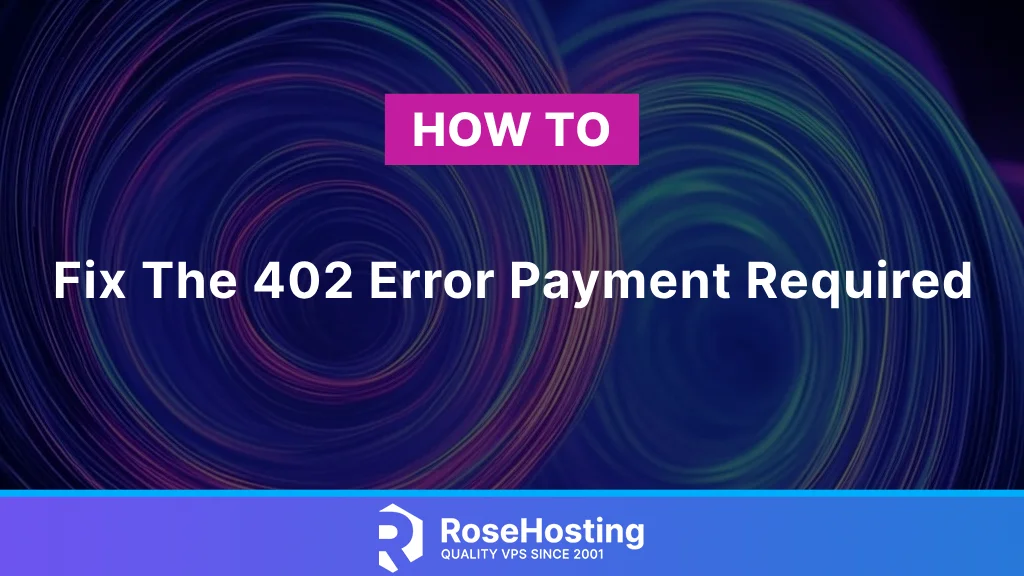
This blog post concerns the HTTP 402 Error, a relatively new status code for Payment Required Error in the browser. The HTTP 402 Payment required status code is not as widely used as other HTTP 4xx codes. It is a rare status code under development that most browsers do not use. However, if you see this status code, you should know there is some payment issue. In the following paragraphs, we’ll explain the 402 Error Payment required error, what causes it, and how to fix it. Let’s get started!
Table of Contents
What is the HTTP 402 Status Code?
The HTTP 402 status code isn’t a standard response or status code. It’s part of the HTTP 4xx status codes family. The web continuously evolves, and new status codes are occasionally needed. That is why developers coded this status code and started to use it more often for future use with microtransactions. There are millions of online transactions daily, so this status code lets users know when there is a payment problem.
Unlike other HTTP status codes, primarily focusing on client or server errors, HTTP 402 errors are for payment-related issues. When this status code is shown, you must pay and reaccess the website or specific content. Since HTTP 402 stands for Payment Required Error, it appears mostly on e-commerce websites or membership services with payment systems. So, the HTTP 402 status code can be considered as an”extra” layer of security related to payments on the website.
What causes the HTTP 402 Status Code?
As we said previously, the HTTP 402 status code is still experimental and not widely used. The cause for this error in the browser is unsuccessful payment, irrelevant information sent in the payment request, wrong user credentials from the credit card, declined card, issues related to the bank, etc. It is important to know that this issue does not occur on the browser level, but the message appears depending on the platform or the payment processor the client is using. A payment processor is a system that enables financial transactions, commonly employed by a merchant, to handle transactions. In the next paragraph, we will show you how the HTTP 402 Error can be fixed.
How to Fix the HTTP 402 Error?
If you see this error, clear your web browser’s cache, cookies, and history. Too many cached files can sometimes cause the HTTP 402 status code to appear in the browser.
Update or reinstall the web browser if clearing the cache does not fix the payment issue. Sometimes, outdated browser software can cause such issues with requests.
Verify the payment information: Check the payment information in detail and ensure that it is correct before you re-apply the payment. If this fixes the issue, you are on the right path to finishing the payment. If not, proceed with the next step.
Using an Alternative payment method is always a good idea to detect if the issue is related to your card or to the application’s code and the developers’ payment implementation. If the payment went through, then the issue was with your card; if not, then the issue is still related to the web application.
Contact the website’s support and report the issue. Since the issue is related to payment and is considered the most important part of the website, the support will look into it immediately. The support can be the hosting company, the website owner, or the developer who implemented that part of the website.
IMPORTANT: The previous steps are possible fixes for clients accessing the website as users. The following two steps are for the website or server owner.
Revert the Code changes you made recently. Reverting the website’s previous state could fix the HTTP 402 Payment Required Error issue.
Checking the server logs is always a good idea to determine the issue on the website. This is also a server-side fix.
Conclusion
The HTTP 402 Error is one of the most confusing status codes, and it is not always easy to detect or fix the cause immediately. Unlike the other HTTP 4xx status codes, web browsers rarely use it. However, the most important thing about the HTTP 402 Payment Required Error is that it is 100% sure the issue is related to the payment. The HTTP 402 Error can appear in different situations, and various approaches can be applied, as we explained in the previous paragraph.
That’s it. You successfully learned how to fix the HTTP 402 Error Payment Required error.
Of course, if you have an issue with this as a server owner, you can always contact our technical support. You must sign up for one of our NVMe Linux VPS hosting plans and submit a support ticket. We will handle everything related to the server. Do not hesitate to contact us anytime you want. We are available 24/7 via live chat and ticketing system.
If you liked this post about the HTTP 402 Payment Required Error, please share it with your friends or leave a comment down below.